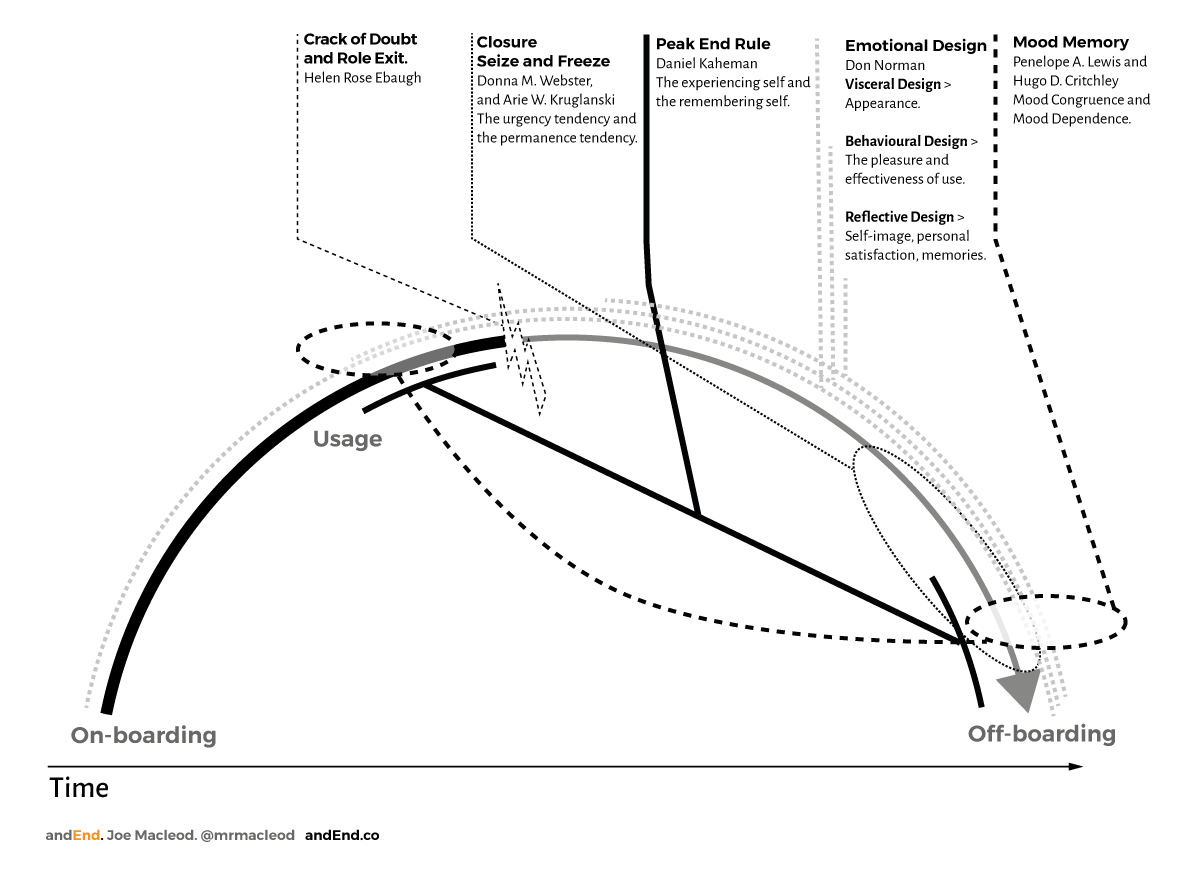How should the end feel?
There are a number of areas to consider when framing an emotionally positive ending for the consumer. Psychology has a wealth of knowledge around endings. Some themes like memory, closure, personal reflection can be aligned to events transitioning the end of a consumer experience.
Role Exit and Crack of Doubt - Helen Rose Ebaugh
People go through similar phases of feeling when leaving a role. Doubts in the current role, Seeking reassurance, Reinforced doubts, Seeking new roles
Closure - Seize and Freeze - Donna M Webster, and Arie W Kruglanski
People like to find closure in two ways.
• Firstly to seek out closure quickly (the urgency tendency) - seize.
• Secondly to maintain that for as long as possible (the permanence tendency) - freeze.
Peak End Rule - Daniel Kaheman
People tend to remember two points from an experience - the peak and the end.
The experiencing self is the one that answers the question “Does it hurt now?”
The remembering self is the one that answers the question “How was it on the whole?”
Emotional Design and Reflective design > Self-image, personal satisfaction, memories - Don Norman
Variability - culture, experience, individual differences.
Interpretation, understanding, and reasoning
longterm relations, about the feelings of satisfaction produced by owning, displaying, and using a product.”
remember the past and contemplate the future.
Mood Memory - Penelope A. Lewis and Hugo D. Critchley
Mood Congruence
When emotional material is remembered more reliably in moods that match the emotional content of the memories.
Mood Dependence
“Mood dependence on the other hand, is the facilitation of memory when mood at retrieval is matched to mood at encoding. In mood dependence, remembered material normally has a neutral emotional valence.”

